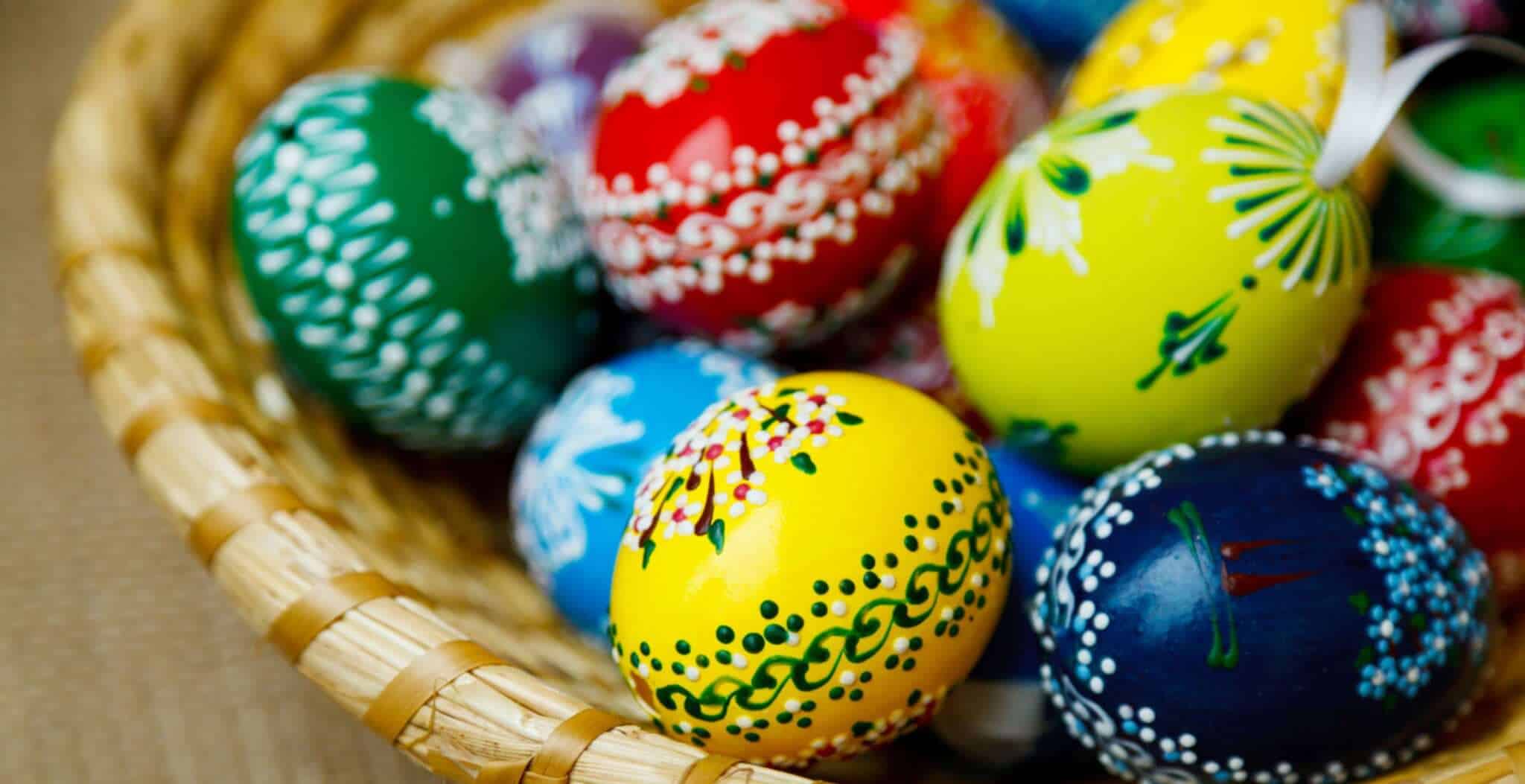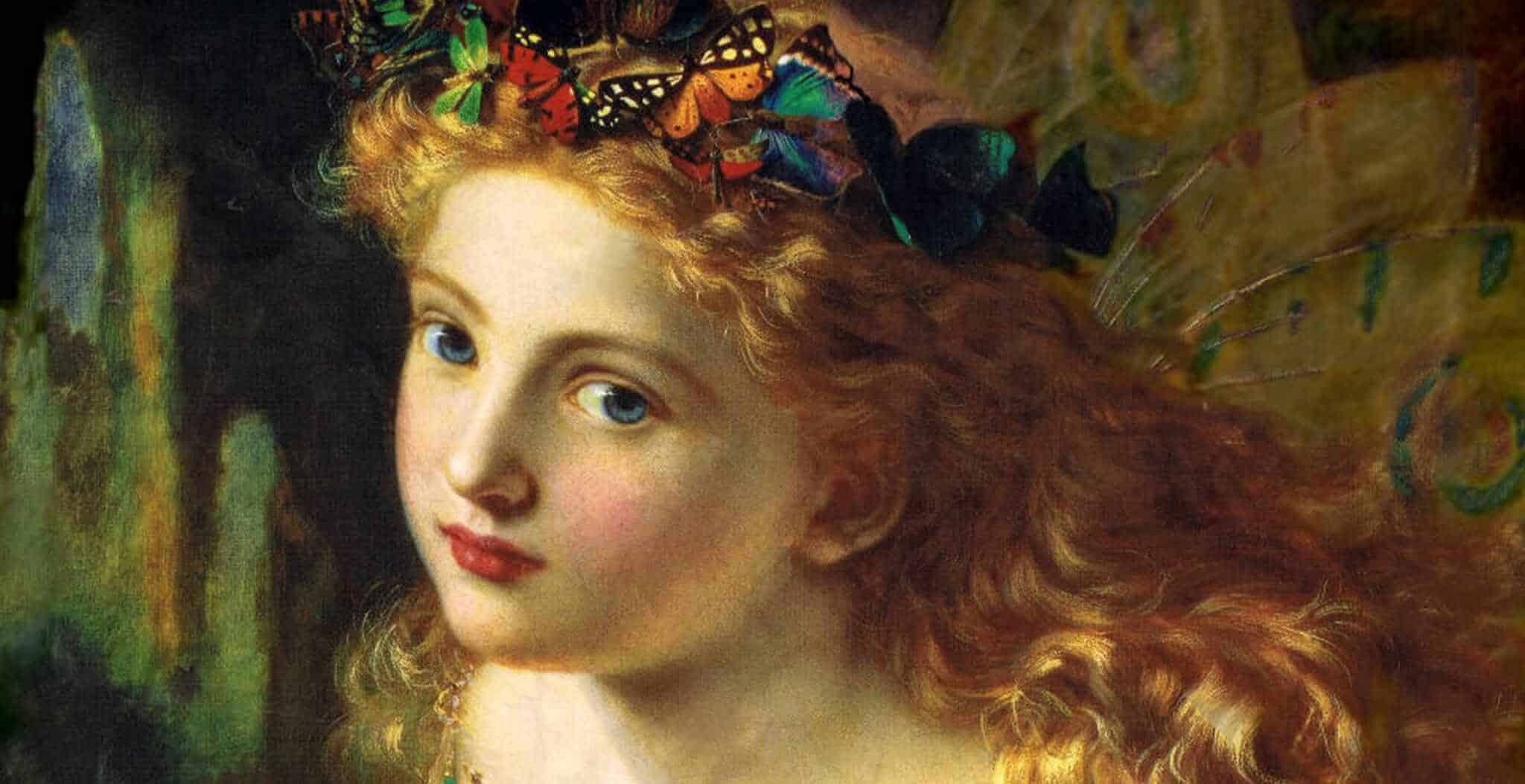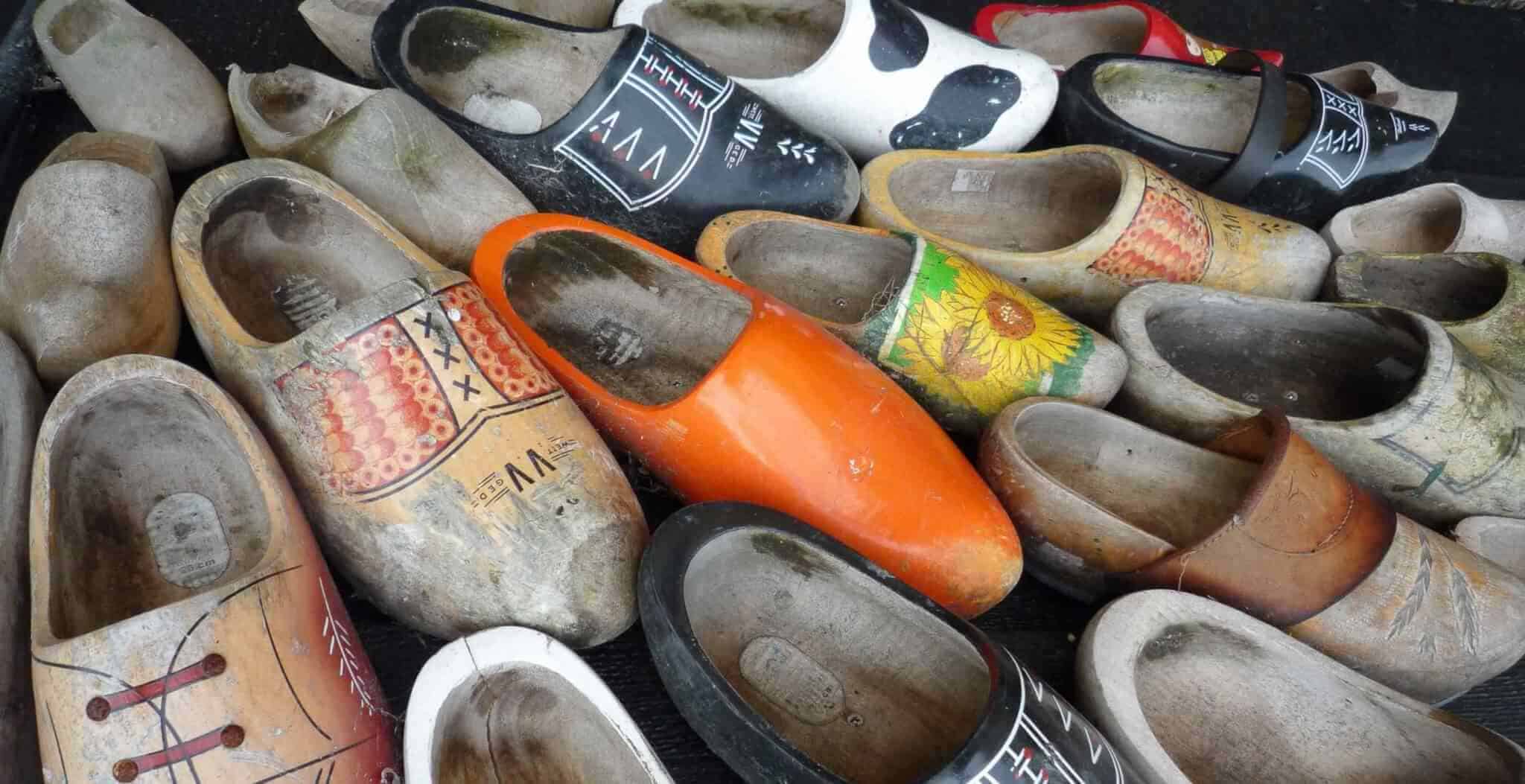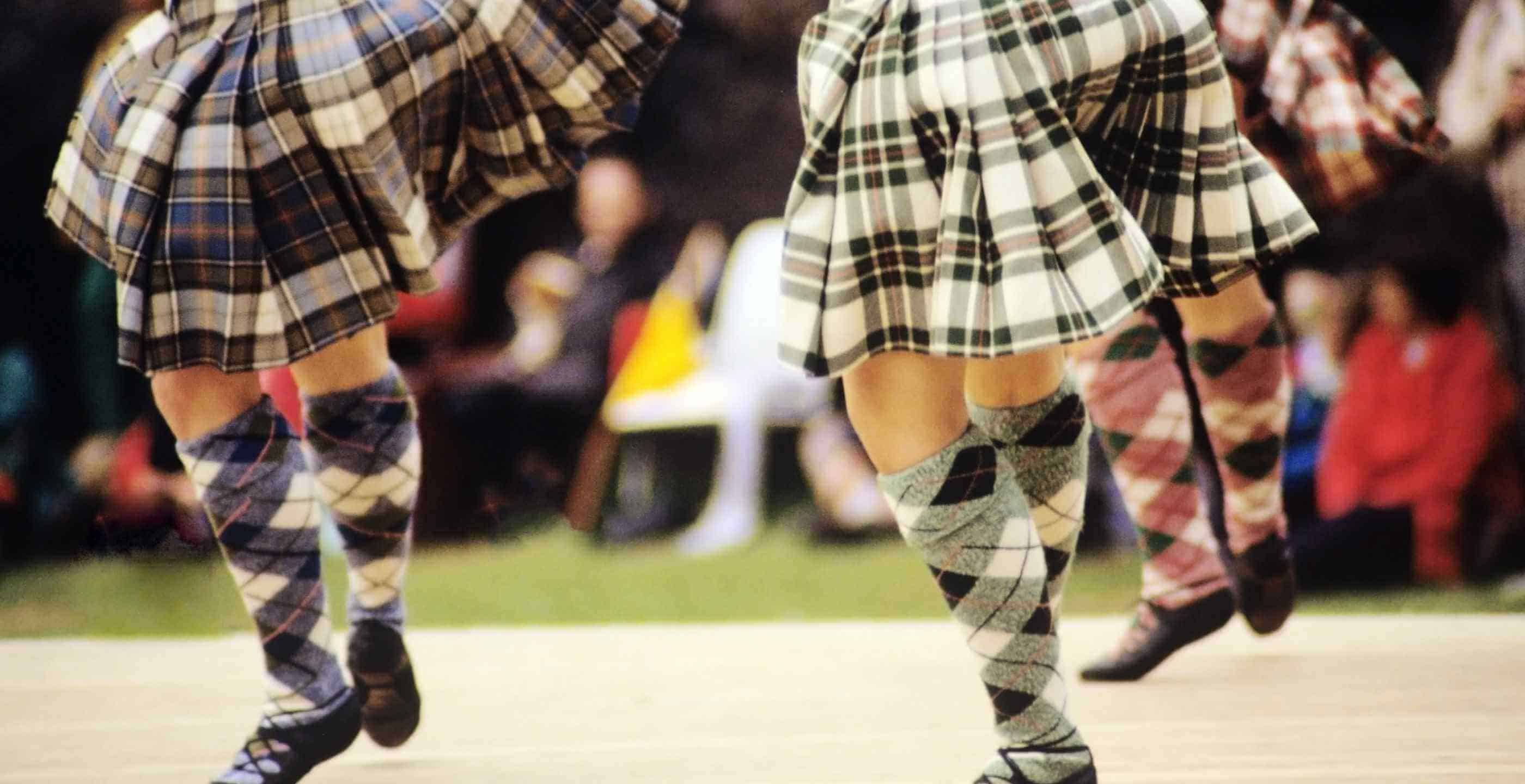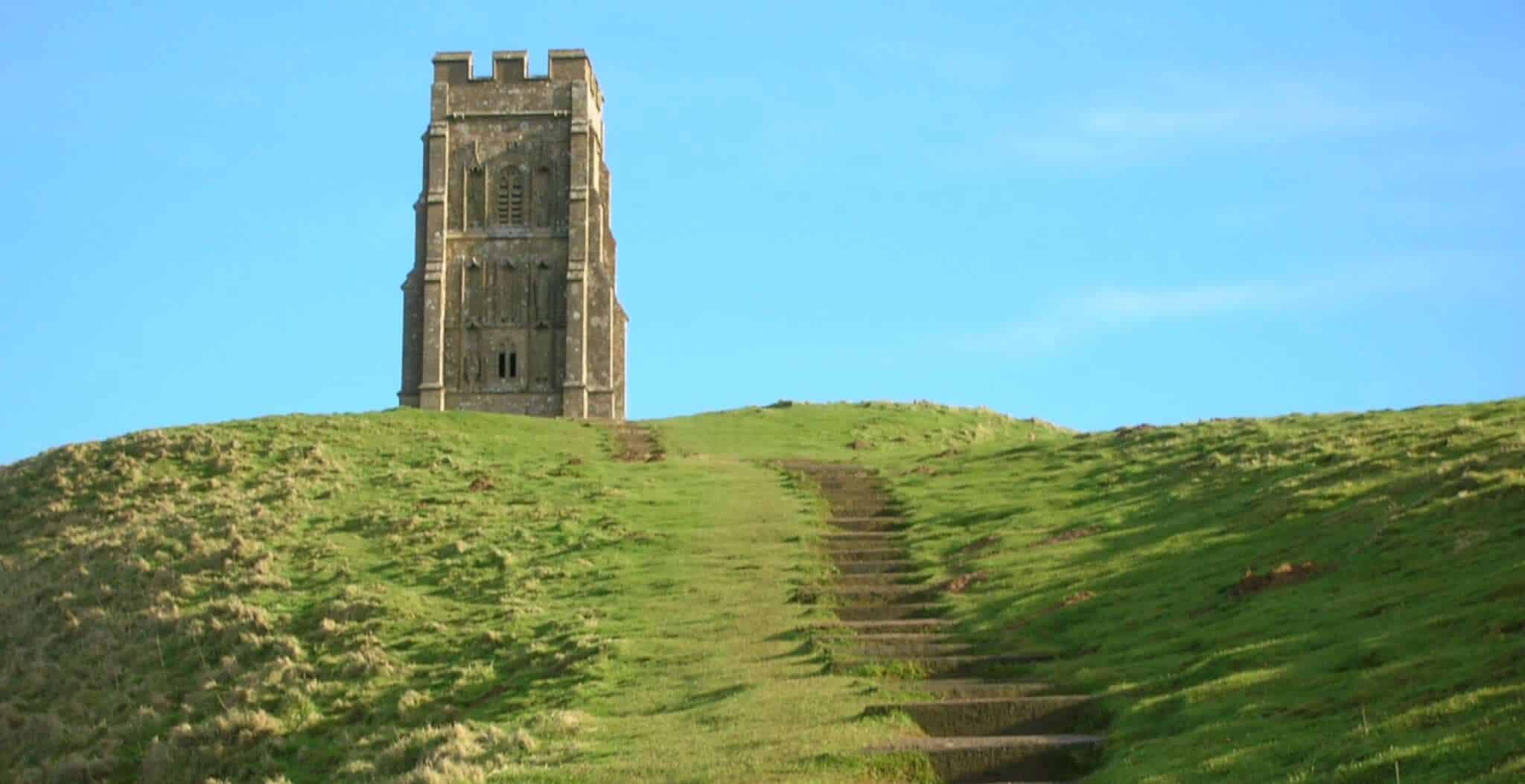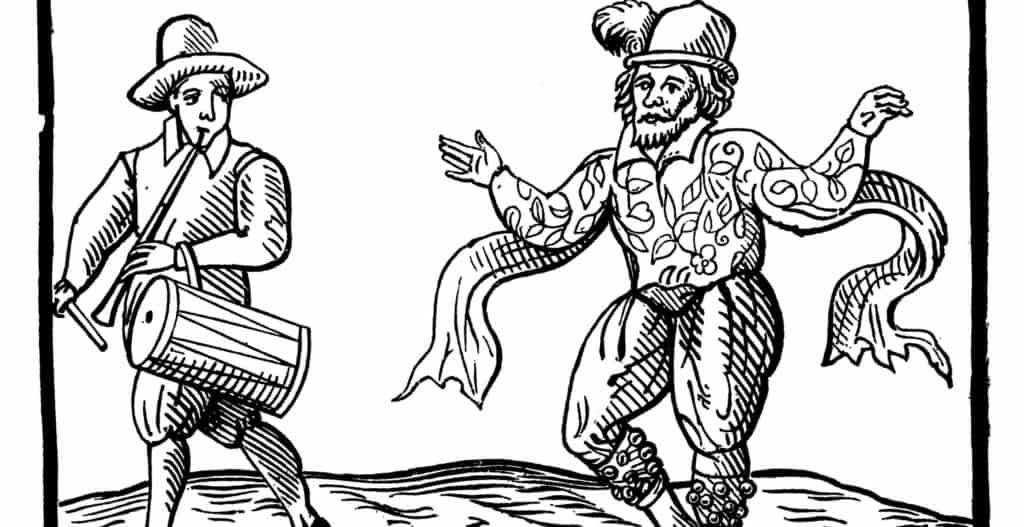Pace-Egging is an ancient Lancashire custom once widespread, and is still to be found in parts of the county today.
Pace-Eggs are eggs specially decorated for a festival at Easter-time, and is a centuries old tradition.
The eggs are first wrapped in onion skins and boiled, giving the shells a golden, mottled effect. This is the traditional way of decorating the eggs, though today they are often painted.
Pace-egging was taken seriously…for example in the household accounts of King Edward I there is an item of ‘one shilling and sixpence for the decoration and distribution of 450 Pace-eggs!’
At Grasmere, Cumbria, in the Wordsworth Museum there can be seen a collection of highly decorated eggs originally made for the poet’s children.
Usually Pace-eggs were either eaten on Easter Sunday or handed out to the Pace-Eggers.
These Pace-Eggers were once a common sight in Lancashire villages. They were groups of fantastically dressed ‘mummers’ complete with blackened faces, wearing animal skins and festooned with ribbons and streamers.
They processed through the streets singing the traditional Pace-egger’s song and collecting money as a tribute.
At Burscough near Ormskirk the Pace-egger’s procession survived until quite recently, and was quite an occasion!
The procession included various characters… the Noble Youth, the Lady Gay, the Soldier Brave and the Old Toss-Pot! The Old Toss-Pot was a drunken buffoon who wore a long straw tail stuffed with pins. It was not wise to grab the Old Toss-Pots tail.
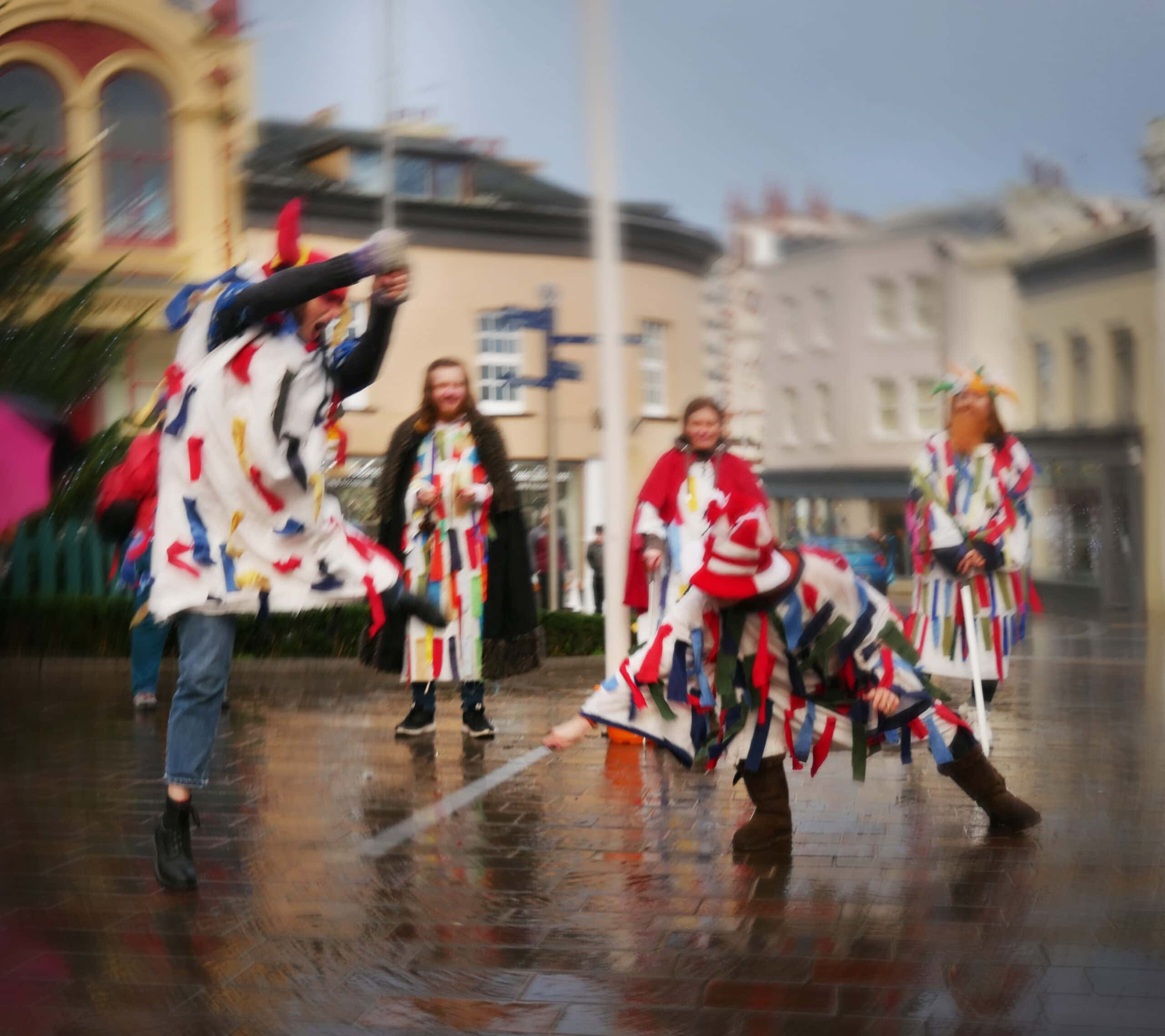
In Avenham Park in Preston the crowds still gather today to watch the old traditional egg-rolling contest down the grassy slopes.
The eggs are hard boiled and then decorated, and hundreds of children today compete to see whose egg can roll the furthest without cracking.
A warning to all… empty Pace-egg shells must be crushed for they are popular with Lancashire witches who use them as boats.
You have been warned!!
Thumbnail image © John Frearson
Published: 23rd May 2015
